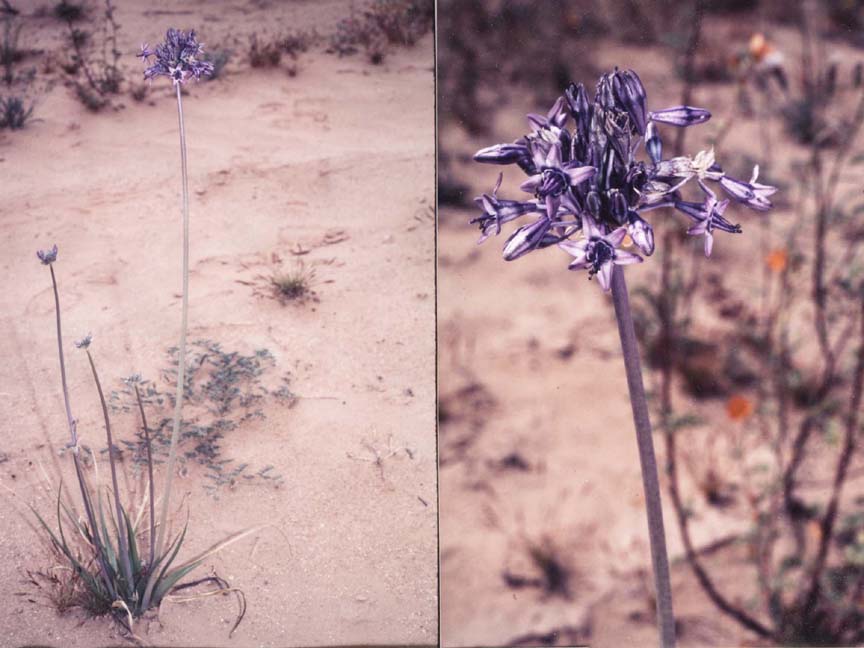Triteleiopsis
|
Family: Asparagaceae |
Herbs, perennial, scapose, from fibrous-coated corms. Leaves alternate, crowded at base; blade planate, keeled, linear, base expanded, margins entire. Scape solitary (rarely 2), cylindrical, stout, 4.5-6 dm × 7-15 mm, pithy, glaucous distally. Inflorescences umbellate, open, many-flowered, bracteate; involucral bracts 7-10, scarious, apex acuminate. Flowers: perianth 6-tepaled, funnelform, distinctly connate proximally into tube; perianth appendages arising at intersection of perianth tube and lobes; stamens 6, epitepalous; filaments inserted in distal part of perianth tube; anthers basifixed, distant from style; pistil 3-carpellate; ovary superior, stipitate, 3-locular, ovules several; style erect, slender; stigma not evidently lobed; pedicel articulate, 1.5-5 cm. Fruits capsular, rounded at apex, equaling withered perianth, dehiscence loculicidal. Seeds black, elongate, thin, flat, surface minutely and irregularly roughened, coat with crust. 2n = 33. G. Keator (1989) considered Triteleiopsis to be part of a group of Mexican genera (Milla, Bessera, Behria Greene), while H. E. Moore Jr. (1953) and R. F. Hoover (1941) considered it to be allied with Androstephium, Bloomeria, Brodiaea, Dichelostemma, Muilla, and Triteleia. Molecular and morphological evidence indicates that it is related to Dichelostemma and Brodiaea, but not to Triteleia (J. C. Pires 2000).
|

